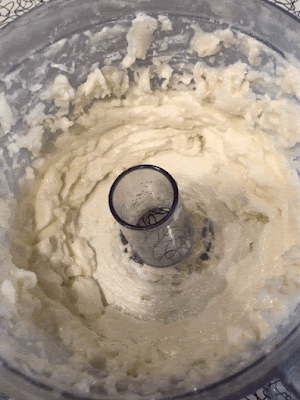Whenever we find fava beans at the Farmer's Market we buy a big bag. When buying fava beans, you should figure about a pound per person. That may seem like a lot but a good portion ends up in the compost bin.
I suspect that some people may be put off by fava beans because of the amount of work it takes. I have to agree with that objection on a certain level. I've already described how time consuming it is to prep fava beans.
Frozen fava beans can be found but it's not really the same as fresh. Depending on what you're making, frozen fava beans can be an option. But fresh fava beans, simply prepared, cannot be beaten.
So the first step with fava beans is to remove the beans from the pod. If you look this up online, most websites will talk about pulling down the fibrous seam from the stem to the end (sometimes called "pulling down the zipper"). Online all of this easy and painless but in reality it doesn't always work so seamlessly. You end up still peeling some parts of the bean and putting in some hard work.
I used to do it that way until a coworker introduced me to a new way to do the first step in processing fava beans. It significantly cuts down the prep time. So let me introduce this new method to you. But, like learning to play an instrument, it will take some practice to master. But once you get it down, the overall prep time will be greatly reduced.
Let's dive in:
How to Get Fava Beans Out of the Pod
- Pick up a fava bean and work from end to the other.
- Locate the first bean in the pod with your fingers.
- Place your two thumbs on the bean in the pod. One entire side of the bean should be covered by your thumbs. The orientation is that your thumbs are closest to your body. The rest of your fingers are wrapped around the outside of the bean.
- Your index fingers should be just outside the top and bottom of the bean with most of the bean uncovered by your fingers on the opposite side.
- In one fluid motion, push out the bean with your thumbs into a small bowl. Be forewarned, sometimes the bean shoots out like a bullet.

I prefer fava beans recipes that are simple. As Chef Linton Hopkins says in one of the links below, "I like fava beans (sauteed) with fresh olive oil, lemon, and sea salt--simple."



